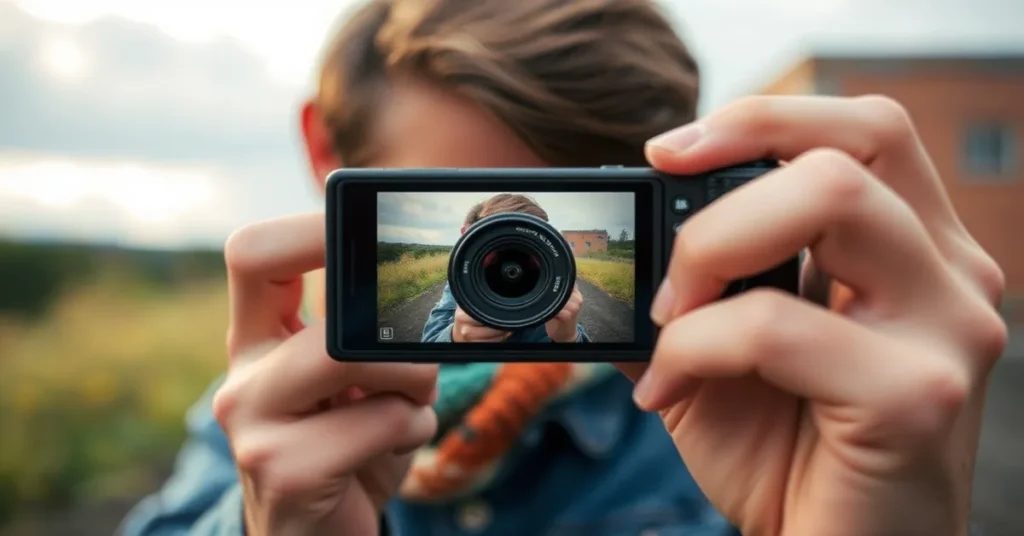Capturing the essence of an Indian wedding goes beyond technical expertise—it’s about deeply understanding the cultural and emotional significance of the occasion. One of the most critical aspects of wedding photography is the creative process of focusing and framing a shot. These two elements are foundational to storytelling through imagery, especially in Indian weddings where emotions, rituals, and vivid colors play a significant role.
1. The Role of Focus: Clarity and Emphasis
Focus isn’t just about clarity—it’s about guiding the viewer’s attention to key moments or details in a scene. In Indian wedding photography, where emotions run high and intricate details matter, focus plays a pivotal role.
- Highlight Emotional Moments: Capture tears, smiles, and meaningful exchanges.
- Depth of Field for Impact: Use shallow depth to isolate subjects and blur backgrounds.
- Selective Focus: Focus on specific details like jewelry or hands during rituals.
- Emphasize Symbols: Keep focus sharp on key objects like wedding rings or sacred items.
2- Focus and Framing of Wedding shot
The way you frame a wedding shot is crucial to capturing its emotional depth. Whether it’s an Indian, urban, or European wedding, each setting offers unique opportunities to tell a powerful story.
1. Indian Weddings
Indian weddings are vibrant and full of rich rituals. From the bride’s intricate attire to cultural ceremonies, each moment is steeped in emotion.
It’s not just about the grand gestures; it’s the quiet glance during the pheras, the rush of excitement in the baraat—these intimate, often overlooked moments are what truly tell the story.Indian wedding photographers know exactly how to find and freeze these moments, revealing the heart of the celebration in ways you never expected.
2. Urban Weddings
Urban weddings blend sleek modernity with intimate moments. Framing in these settings often involves creative angles and contrasts between the couple and their surroundings, from chic city venues to minimalist spaces. The goal is to capture both the style and the emotion, highlighting the raw connections beneath the polished setting.
3. European Weddings
European weddings are defined by scenic backdrops, like castles or vineyards. Framing these moments often involves wide shots to capture the grandeur, complemented by intimate close-ups. The key is to balance the couple’s emotions with the timeless beauty of their surroundings.
3. Framing: Creating a Cohesive Visual Narrative
Framing is about telling a story through the image. It creates context and balance, ensuring that every shot adds meaning to the larger narrative.
- Wide Shots for Context: Include the venue and surroundings to tell the full story.
- Leading Lines: Use natural lines like aisles, paths, or decorative elements to guide the viewer’s eye.
- Symmetry for Balance: Highlight grandeur and symmetry, especially in the wedding setting.
- Rule of Thirds: Position key subjects off-center to create dynamic compositions.
- Background Considerations: Make sure the background complements the subject—whether it’s ornate or neutral.
photography relies heavily on framing to capture the cultural significance of the occasion. Whether it’s the grandeur of the ceremony or the intimate exchange between the bride and groom, framing helps set the stage.
4. Timing and Anticipation: Capturing Fleeting Moments
Indian weddings are filled with fast-paced moments. Photographers need to anticipate key events to get the perfect shot at the right time.
- Capture Rituals: Be ready for key moments like the exchange of garlands or the lighting of the fire.
- Prepare for Candid Shots: Watch for unposed moments like laughter or a loving glance.
- Timing the Vows: Capture the exact moment of vows or significant rituals.
- Spontaneous Interactions: Weddings are full of candid moments between the couple and their guests.
5. Working with Light: Embracing Natural and Artificial Sources
Lighting can make or break an image. Indian weddings often transition from daylight to artificial lighting, and knowing how to work with both is key.
- Use Natural Light: Leverage soft, flattering daylight for portraits and candid shots.
- Adjust for Low-Light: Use artificial light effectively when the event moves indoors or into the evening.
- Backlighting for Drama: Position the light behind the subject to create a halo effect.
- Soft Lighting: Use diffused light for soft, natural-looking portraits.
- Light on Details: Focus on the intricate details of the bride’s jewelry or the couple’s hands.
6. Framing Different Events: Weddings, Festivals, and More
The principles of framing can be applied to various events beyond weddings, such as festivals, family celebrations, and cultural ceremonies. Each event has its own dynamics.
- Indian Weddings: Framing shots that include the couple, rituals, and decor are essential. Indian wedding photography thrives on capturing the emotions and cultural richness of these occasions.
- Festivals: Capture the energy of festivals like Diwali or Holi, using color and movement in framing.
- Religious Ceremonies: Focus on sacred rituals and the symbolism of actions, like the lighting of lamps.
- Family Gatherings: Frame family interactions, ensuring each person’s expression adds to the overall story.
7. Composition and the Use of Color
Color plays a huge role in Indian weddings, and framing can enhance this vibrant visual feast.
- Vibrant Wedding Attire: Highlight the Groom’s and bride’s attire or the essential accessories of Indian groom through framing and contrast.
- Contrasts in Color: Use contrasting backgrounds to make the subjects stand out—especially vibrant reds, oranges, and golds.
- Highlight Decorative Elements: Frame shots to showcase traditional wedding decor, floral arrangements, and cultural artifacts.
- Complementary Colors: Use the wedding color palette to frame shots harmoniously—reds with golds, greens with marigolds, etc.
- Rich Textures: Capture the textures of fabrics, jewelry, and intricate henna designs.
8. Framing Group Shots: Balancing Family and Guests
Weddings are family affairs, and group shots are crucial. Proper framing can help organize large groups in a way that feels natural.
- Centered Framing for Group Shots: Position the bride and groom centrally, with family and friends arranged symmetrically.
- Candid Group Moments: Capture guests interacting—whether laughing, chatting, or admiring the couple.
- Large Family Shots: Use wide-angle lenses to fit everyone in while maintaining clarity.
- Create Depth: Use layers in group shots to create depth—place people in the foreground, middle ground, and background.
- Avoid Distractions: Ensure no one is hidden behind objects or other people in the group shot.
9. Post-Processing: Enhancing Focus and Framing
Post-production is where photographers can polish their shots, enhancing the focus and framing even further.
- Sharpening Key Details: Ensure that the focus areas are crisp and clear, particularly the couple’s faces.
- Cropping for Better Composition: Sometimes cropping can enhance the framing, improving the balance or symmetry of the shot.
- Enhance Colors: Adjust saturation and contrast to bring out the vibrancy of the wedding decor and attire.
- Correcting Light: Adjust brightness and contrast to ensure every shot is well-lit, especially in low-light conditions.
- Retouching: Remove distractions like background clutter to improve the focus on the subject.
10- Showcase Your Unique Photography Vision
Capturing the raw emotions of a wedding—whether it’s the joy of the first kiss or the quiet connection between family members—is a skill that takes both expertise and intuition. But even the most skilled photographer faces the challenge of reaching couples who truly appreciate the depth and artistry behind their work
In today’s competitive market, it’s not enough to simply take great photos; photographers need a solid strategy to share their work with the right audience. This is where digital marketing for photographers becomes essential. By mastering online strategies like SEO, social media engagement, and targeted advertising, photographers can showcase their unique style to potential clients and can boost their photography business profit.
Conclusion
Focusing and framing are key in photography, especially in vibrant, culturally rich celebrations. From intricate rituals to emotional moments, mastering these elements allows photographers to tell a compelling story. Understanding focus, timing, and lighting ensures images that will be cherished for years to come.
For those looking to perfect photography, particularly weddings, refining your approach to focus and framing is essential.A special thanks to the wedding crew—planners, coordinators, and family—whose hard work helps bring these moments to life.







